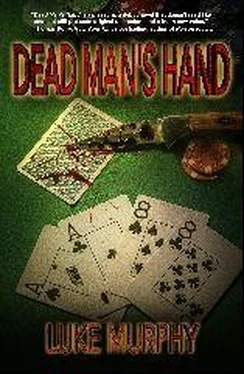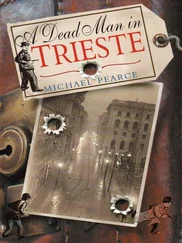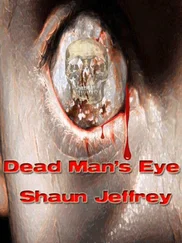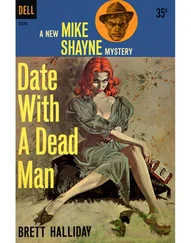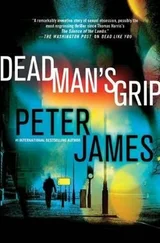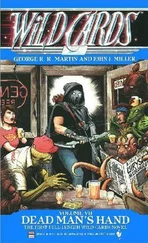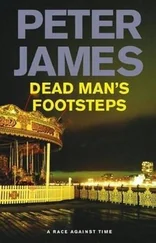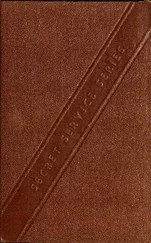He had already found nothing in the office or business paper trail. That had only worn down Dale and his team.
How much was he being played by the department heads, who only seemed interested in Watters? Who did Grant, or Sanders, have in his pocket?
He moved on to the death of the prostitute. Her street name was Amber, real name unknown. They had searched the database but no description on an active missing person case had been found. No one seemed to want her—living or dead—except for sex. She was not the killer’s target.
Wait.
The slice on Amber’s throat had come from right to left. The predator had been behind the victim. That would mean that the killer had held the weapon in his left hand. But Pitt’s throat slash had come from left to right, same as Grant’s. That killer had been right handed.
Dale called Edgar Perkins at home.
When the medical examiner answered his phone, Dale spoke. “Hey, Edgar, it’s Dale. I need some information.”
“You want to know about your DOAs from the bookie’s shop?”
“Tell me about the throat slash on Amber.”
Perkins had been the chief pathologist for the Las Vegas Metropolitan Police Department and Crime Lab for over twenty-five years.
“Well, since we determined there was only one killer, I originally thought that the murderer had been left handed, because of the direction of the wound on Amber’s throat. But after a second check on Pitt’s wound and substantial consideration, I’d say that the killer is ambidextrous. The slash on Pitt’s neck, like Grant’s, almost decapitated both victims. But the other one, the woman’s wound, was a little more sloppy. The woman had considerable bruising and an abrasion from the pressure of being held, which indicated that the man’s right arm was his stronger side. The knife was held in the left hand, but the killer could be trying to throw us off. In my opinion, this attacker can use his left and right hand with the same degree of accuracy.”
“Thanks, Edgar.”
“No problem, Dale. How’s your—”
Dale hung up before Perkins could keep him long. An ambidextrous killer, that had to narrow down the field. He turned the page and read on.
Pitt and Grant were killed with the right hand but the prostitute was not. Dale suspected the rear angle of the attack made it difficult for the killer to control the woman with his left arm and kill with his right, as he’d done twice before. She was weaker than either man, so the killer didn’t need the same strength. He controlled her with his right arm, which is why he was scratched.
He assumed that if it had not been for the happenstance of the prostitute, the killer would have slashed both times with his right hand and all the evidence would indicate that the killer was right-handed. But as life happens, she was there and that revealed the ambidexterity of the killer.
They already knew that skin under the prostitute’s nails, from fighting her killer, was Caucasian and therefore not from Watters. Even though there had been no scratch marks on Pitt, the trace was still being compared with his DNA.
Dale slid the two medical reports to the side of his desk. He opened up Grant’s file and set the report beside the other folders. It made no sense to have more than one killer with wounds this similar.
Sanders was so obviously the person with the strength and will to kill all three. He killed Grant for the Greek. He killed Pitt for cover up. But Dale’s sergeant had already put Sanders “off limits.” The casino owner was practically untouchable.
Dale compared the wounds. The MO was the same for all three murders, even though two different knives had been used. Any smart killer would change weapons after each killing and destroy the ones used.
Craig’s death, shot in the head, was the only wild card. There was a second killer who used a gun.
He did one more search of national and local killings with the same MO, but no dice—nothing to do with this pattern that could not be explained by chance.
But he cross-referenced all of those cases anyway. At the national level, as he suspected because the knife-to-throat MO wasn’t unique, he found a total of 124 cases over the last year. But when he dug deeper the suspects were all ruled out for various reasons—they were dead, serving life sentences, paroled or disappeared. The very few who didn’t get crossed off and potentially could be Dale’s killer were very unlikely because the murders happened in Vegas.
He threw the files into his desk and shut down the computer. He was at an investigative dead end.
He looked around the office. The lighting was dim and only a handful of officers remained. He wondered how many of those officers also had empty homes to go to. The divorce rate was high on the force and he didn’t want to be just another statistic. But would he ever be able to make it up to Betty and Sammie?
One last thought about the case struck him. He wandered over to his partner’s messy desk. He found a DVD resting on top of a bundle of files. The label read, “Sugar Bowl.” He popped it into the video player.
He remembered Watters on the football field—graceful and unstoppable. His large frame and long, smooth strides made him the model running back headed for big-league glory. From Jimmy’s notes, Dale read that Watters had run the ball sixty-one times that game for the Trojans, a new NCAA record. So finding a sequence of Watters’ carries wasn’t a challenge.
After the first carry, Dale thought he had picked something out. After the second, he knew for certain. After seven straight carries, it was irrefutable—Watters received the ball from his quarterback the same way each time, cradling the ball with his right arm and using his left to stiff-arm his way through tackles, no matter which side the play was called to run. Watters was as right-handed as right-handed ever got. Someone ambidextrous, at that level of play, would have used that to their advantage.
Why was this department determined to pin this on an innocent man?
Chapter 29
Dale took a few more minutes for another search—until he found an article about Sanders in his baseball days at UNLV. Sanders had been an elite pitcher and had to have a glove made just for him because he was an extreme variety: an ambidextrous pitcher who switched arms when he pitched. Dale saved the article and added it to the file.
He was going to nail Sanders somehow without losing his own job and pension.
As he finally strapped his weapon on and turned to go home, he thought he’d grab one more thing, the tape of Linda Grant’s phone calls.
A few minutes later, he steered the slow-moving vehicle toward his house. As usual on the ride home, he could feel himself starting to crash after an exhausting investigative day. He summed up where he was with the investigation.
Other than Watters, there were three potential suspects.
Dale thought about the explicit photographs of Linda Grant and Ace Sanders. He put that together with the Grant prenup as well as Linda Grant’s twelve-percent portion of the estate that had now been sold to Sanders. Dale knew Linda had a motive to kill her husband.
He cut the headlights and let his car roll into the driveway. He sat and stared at his modest but well-maintained home. His wife had spent hours fussing over the flowers. Would he ever see that again? The yard smelled of fresh-cut grass.
He stepped inside, where the only sounds were his footsteps and breathing. The sights and sounds had changed. No more of Sammie’s soft moans on the baby monitor, or Betty on the loveseat, screaming out answers at the TV during Wheel of Fortune. He might never again hear Casper the Dachshund snoring as he slept comfortably on the arm of the couch.
The sounds he had grown accustomed to, that he had taken for granted and had ignored, he might never get back. Those were the things he truly missed, the things that made his house a home.
Читать дальше
